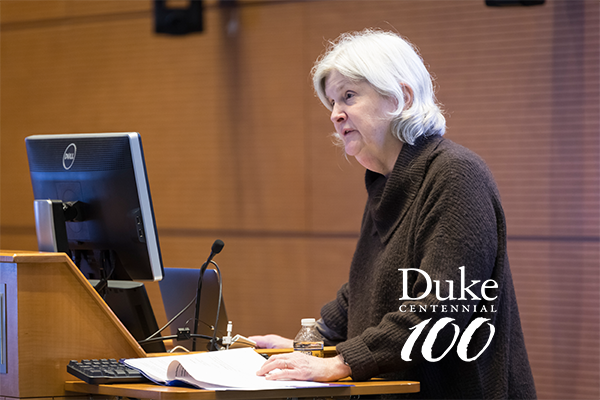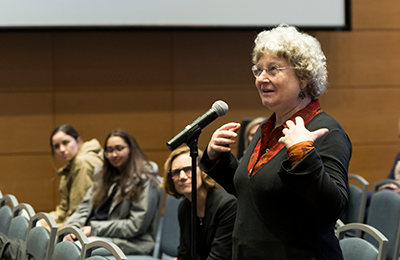
Nancy Andrews, MD, PhD, executive vice president and chief scientific officer of Boston Children’s Hospital, recalled that in the 1980s a member of her dissertation committee at the Massachusetts Institute of Technology suggested she make a career studying aggression in toddlers, though Andrews was a molecular biologist. This was one of many slights she and other women in the sciences were encountering, though she didn’t think of them as slights at the time.
Not until 1999, when a report came out from MIT containing “indisputable data” documenting unequal conditions for female faculty in the sciences at the school, did Andrews fully recognize that what she and other women were experiencing — sub-par lab space, lower salaries, less-desirable teaching and committee opportunities — was due to a pattern of bias and not some deficit in her abilities.
“When I read this report in 1999, I was stunned because I recognized myself,” Andrews, dean emerita of Duke University School of Medicine, said during her Duke Centennial Research and Innovation Week Daubechies Lecture on “Being A Woman in Science and Leadership” on January 31. “The president of MIT at the time could have kept the report silent, but to his credit, he publicized it widely,” she said.
Though the situation for women in science has improved since then, progress has been slow, and it has waxed and waned, Andrews told an audience made up overwhelmingly of women. Women in science still face discrimination today, though it may be more subtle than in previous years. “Discrimination sounds like a harsh word, but that’s what it is,” she said.
Andrews noted that she has heard some say recently that women have achieved equality in the sciences. “I disagree,” she said, noting that only 14% of the members of her own section of the National Academy of Sciences are women.
Andrews said that Duke is doing better than many other institutions at hiring women into leadership roles. Andrews was the first woman named dean of the School of Medicine, and during her tenure from 2007-2017, half of her vice deans were women. “And while we didn’t reach parity in department chairs, we made progress,” she said. At Duke overall, today half of the schools have female deans. “To me this means you are looking widely for the best people,” she said.
To move further toward equality, Andrews said that women should be well represented in search lists for leadership roles, and that it’s important for leaders to identify women with high potential for executive coaching and leadership training.

She also said that leaders should deal swiftly and harshly with obvious sexual harassment, teach what discrimination looks like, call out bullying, and refuse to allow even scientific “stars” to behave badly.
In addition, career flexibility and policies that support parents, no matter their gender, are important, she said.
Andrews encouraged women scientists to find colleagues who support them by talking about challenges and celebrating successes. And she advised women to speak up when they are experiencing inequities. “Keep notes and keep a file, and let people know,” she said.
Ingrid Daubechies, PhD, for whom the lecture is named, attended Andrews’ talk. Daubechies is the James B. Duke Distinguished Professor of Mathematics and Electrical and Computer Engineering at Pratt School of Engineering and was called “the godmother of the digital image” by the New York Times.